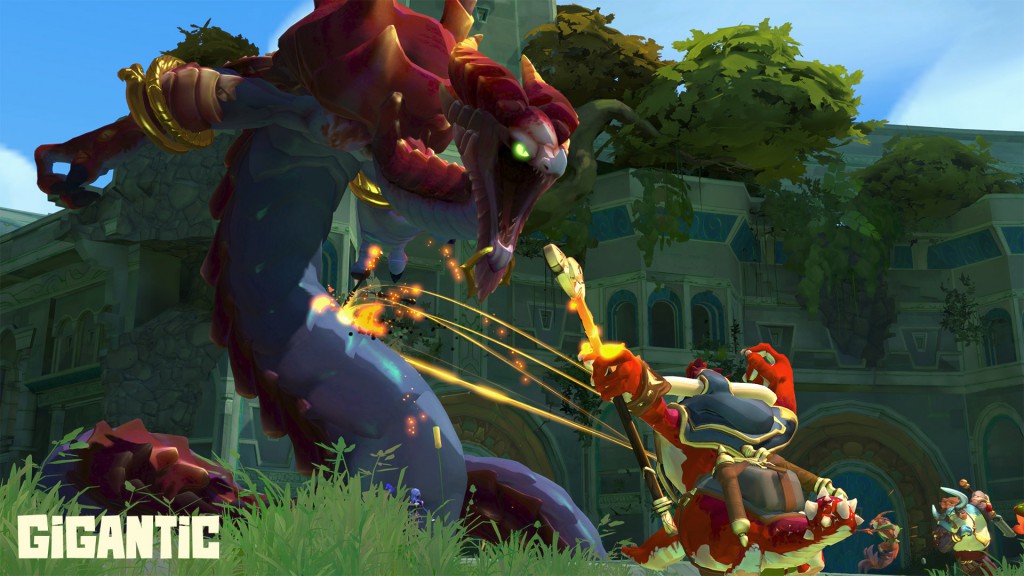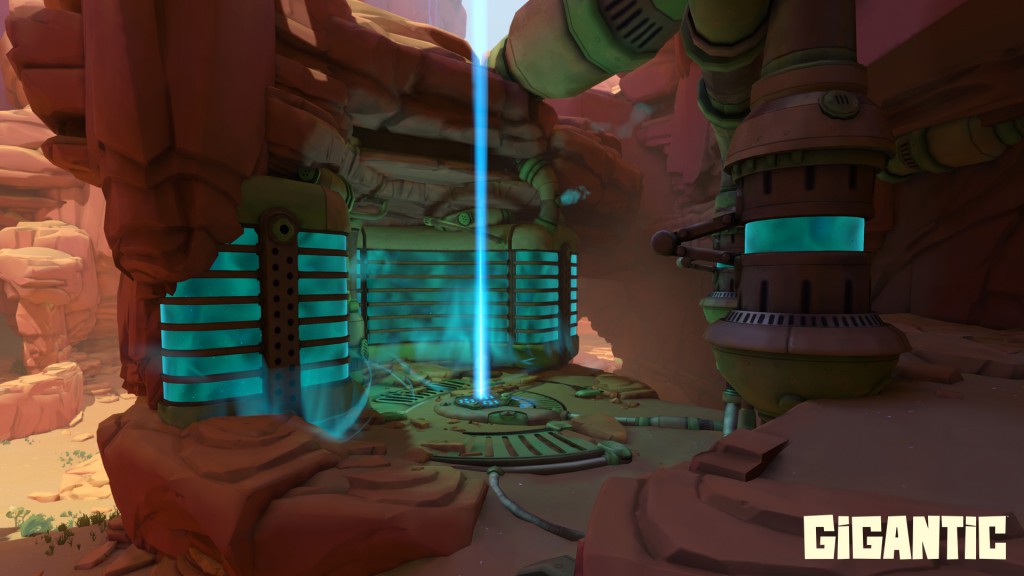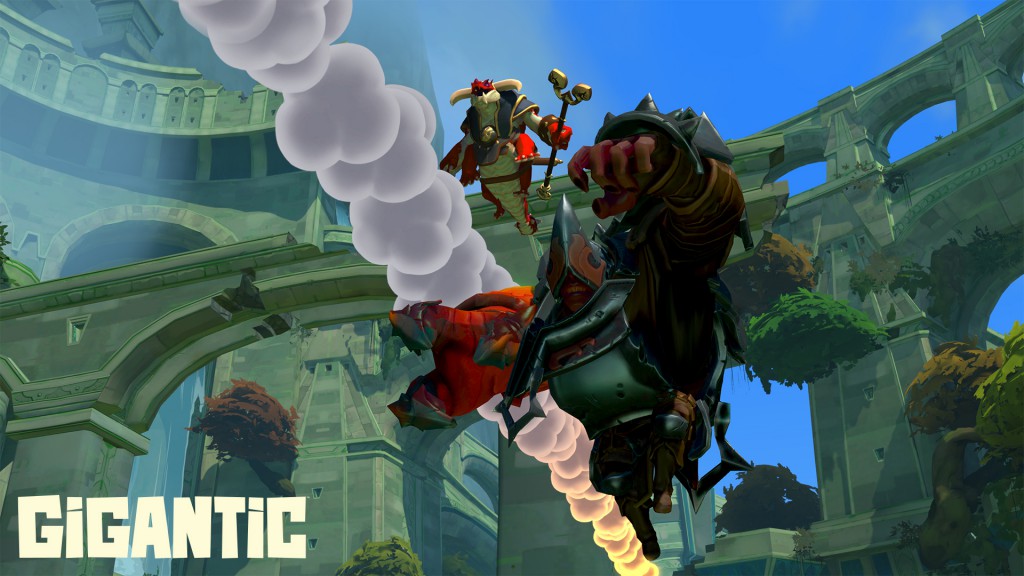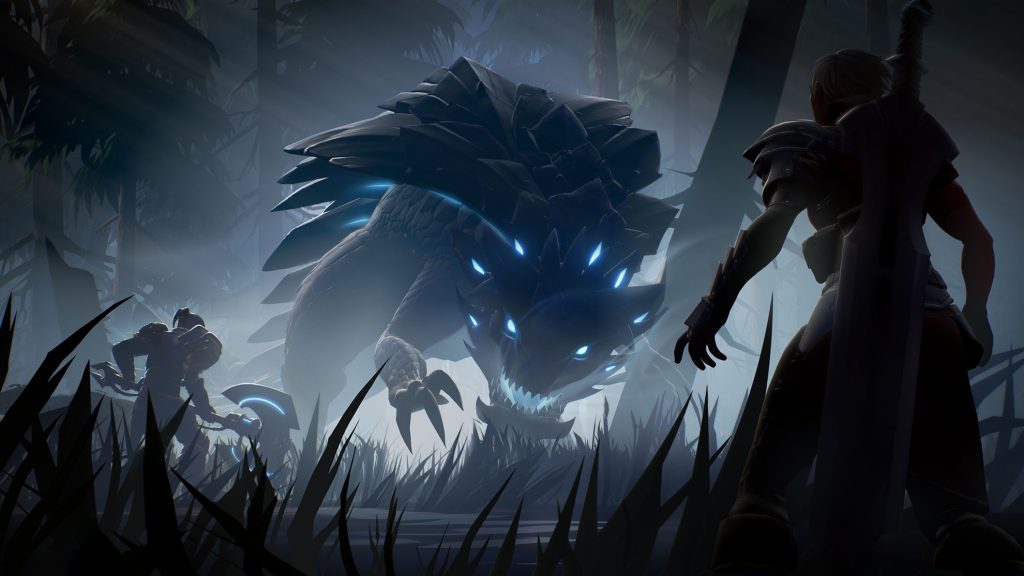Let’s talk about Gigantic.
Not a MOBA
MOBA is joining RPG in that the meaning of the acronym applies to many games not included in the genre. “Multiplayer Online Battle Arena” is a good description, but Gigantic doesn’t have minions, it doesn’t really have lanes, and you can’t break your enemy’s base. Instead, it has capture points, and summons, and giant fighting creatures.
The goal in Gigantic is to destroy the enemy team’s Guardian while defending your own, but that is a bit like saying the goal in Football is to score more points than the other team. In Gigantic, this is accomplished by performing various actions that grant Energy to your guardian. When it has a full bar, it will go rampaging toward the enemy guardian, rendering it vulnerable to player attacks for a little while. Kills grant energy, as does attacking the opposing guardian when it’s not vulnerable (this actually steals energy, but requires getting through the enemy team without dying). I think the capture points have some effect on how quickly your bar fills, but I didn’t get a chance to see that during the playtest. Since only one guardian is on the offense at a time, it plays out a bit like a football game, with alternating attack and defense.
After enough times of this (or I think if one of the guardians is low enough on health?) The Clash begins, and the guardians adopt positions that are much closer to each other, effectively reducing the playable space. Points can no longer be captured once this happens, and kills are worth increased energy. This greatly accelerates the pace of the game, creating a definite “endgame” scenario. It remains to be seen (by me, anyway) if this prevents games from being drawn out unnecessarily.

Summon Creature
The mechanic for capturing points is also somewhat non-standard. Points are taken by summoning creatures on them while they’re neutral. Which creature you summon seems to have some effect on your team, one example is a treant that slowly healed the team members that were near it. There was also a cerberus that granted vision of the enemy team on the minimap, and a drake of some kind that I don’t know what it did. These creatures fight for you in any confrontation close enough to the summoning point, which makes defending one much easier (generally) than attacking one. I would say it takes a coordinated effort to take one out, but it’s possible that the character I was playing (Charnok) is too squishy for it. Belghast claimed that he came close to doing it with Margrave (who is a tank) and probably could have if he were more familiar with the game. These summoning points are the territory control mechanism, and they’re the points that fights tend to start around unless one of the guardians is currently on the offensive.

Motley Crew
One of the things I find very interesting about Gigantic (but unfortunately didn’t get a chance to personally explore) is that you are playing a very different game depending on which hero you’re currently playing as. The cast isn’t yet very large, but they seem to have a lot of archetypes covered. There are 14 revealed heroes, and Motiga mentioned that there are more in development. There seem to be a few characters for people who really like shooters (Voden, Roland, Imani, HK) who all focus on somewhat different roles. Imani for example is fragile, has a large crossbow, and is a sniper. HK is more durable and firmly believes in the Vladof philosophy, making his effective range somewhat shorter.
There are also a variety of characters who don’t rely on such careful aim, including most of the game’s melee characters. The already-mentioned Margrave is a tank, and can be quite disruptive while not dying. Tyto (the owl-dude who seems to be prominent in the game’s marketing) is very dangerous and fairly evasive, but can’t take much punishment. These characters rely much less on your aiming ability, and instead on your ability to navigate the map and get to where you can be the most effective.
There are characters that don’t fit neatly into either of these camps like Xenobia, who has a kit filled with debuffs and support via murder (or enabling murder), or Vadasi who is a more traditional supporting character and can power her abilities with her own health. (I’m told these two pair very well on the same team.) There are also a few mage-types, like Mozo and Charnok, who I got to play at PAX.

Categorizing this game is somewhat difficult, other than “surprisingly fun” and “competitive multiplayer”. I suppose it also has arenas in which you do battle online. I look forward to more coming out about this one, because I can’t wait to play more of it.





